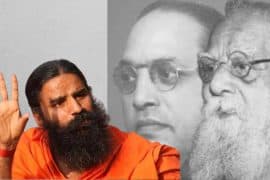Let’s take a look at the choices made by the Indian Cinema and audience, and how much have streaming traditions changed over time.
Streaming traditions have certainly changed over time. Every week people not only wait for the two-three template releases in the cinema but also the new episodes or movies being released online. People are as hyped for Sacred Games season 2 as they are for huge box office releases like Kalank.
Over The Top (OTT) media Platforms like Netflix and Amazon Prime have their own perks. Stories which everyone might not want to see, which have low budgets and can’t land larger than life banners for producing or promoting, create their own niche in these little corners for the audiences to experience and enjoy.
Fortunately, these corners aren’t so little anymore. Sacred games has a gigantic fanbase and following while movies like Love per square foot, Rajma Chawal, etc also created immense buzz.
TVF Play by the You Tube Channel ‘the Viral Fever’ is another platform immensely popular with TVF Pitchers having the highest rated IMDB score (9.8) in Indian Web series. Recently, Made in Heaven on Amazon Prime went off the charts with its popularity. While documentaries like Period: End of a Sentence became a global phenomenon and landed the producer Guneet Monga an Oscar.
Shubhi Gupta, a first year B.Com (Hons) student from Lady Shri Ram College commented “These online streaming websites do provide us with a wide variety of content with ease and convenience. And not just ‘fun’ entertainment but also content on sensitive and social themes.” While Dhwani Bhargava, a student pursuing Mass Communication from Symbiosis Pune stated how these platforms help new talents to emerge, and increase job opportunities across different fields. “So, people don’t go to Mumbai only to work in movies anymore, but also to be a part of platforms that create such shows, be it technicians, writers, editors, cinematographers or actors, job opportunities have increased for everyone”
Question is, what does this mean for the future of our beloved traditional Cinema?
Let’s face it, we all love going to the movies. The experience of sitting in theatres, with friends, family and loved ones, having popcorn and sodas is always going to be close to our hearts. This might be the reason why single screen theatres like Amba Cinema are still up and running and why “movie and dinner” is still a perfect first date template.
There has been a spike in the use of online platforms but Cinema is still flourishing in its own way and not only the big banner Khan movies but content driven stories are also loved like Andhadhun, Badhai Ho, or Gully Boy. Gaurvi Rustogi, a student from Shaheed Sukhdev College of Business Studies added “Netflix wagera sab thik hai, but the feeling of watching a good movie at the cinema when it is released on a big ass screen will exceed everything else”.
But critique essentially run through when revolutionary stories don’t do well at the box office and receive a ‘flop’ status. During a podcast discussing Sonchiria and Mard ko Dard Nhi Hota, reviewers from Film Companion believed that such movies could also adapt a “Roma/Bird Box-like-model” where they are released on a smaller scale with limited screens and receive a wide release via the Video on Demand platforms. This could easily be seen by comparing the reach of Bombay Talkies and Lust Stories, both being short anthology films directed by Karan Johar, Anurag Kashyap, Zoya Akhtar and Dibakar Bannerjee. Even though Bombay Talkies was appreciated it didn’t start up a conversation like Lust Stories did.
Another friend of mine, Himanika Agarwal from Gargi College raised an interesting take. She believed that stories told via web shows are longer, wider in their character arcs and storylines and hence people connect to them more. A student also asked Mr. Jim Sarabh at St. Stephens where he recently came to promote Made in Heaven, why the audience wasn’t able to see more of Khilji and Malik Kafur where he replied with a similar answer stating that unlike web shows, films have limited running time hence only one story remains central.
However, these platforms have their cons as well. Shubhi had also added how these platforms have promoted binge-watching habits in her and make her confirm to societal norms putting an unnecessary pressure on her. She added “Since everyone is discussing same show or movie, it makes an individua who might not be interested in it watch the thing so that he/she can also be a part of such conversations and interactions. Let alone conversations, to understand memes you have to watch these shows.”
Talking to my family, I realised that the reach of these platforms has transcended the boundaries of age. Parents are as invested in these stories as their children. My mother added “I would rather watch TVF Tripling season 2 and Alt Balaji’s Bose than Komolika concoct evil plans in Kasautti. The quality of content on TV is just degrading day by day.” This change might have been accelerated by the introduction of new pricing system in Television cables where now we have to buy individual or set of channels separately which have raised the costs. Families as a whole are now moving towards OTT platforms.
Featured Image Credits: Social Samosa
Sakshi Arora
[email protected]



Comments are closed.